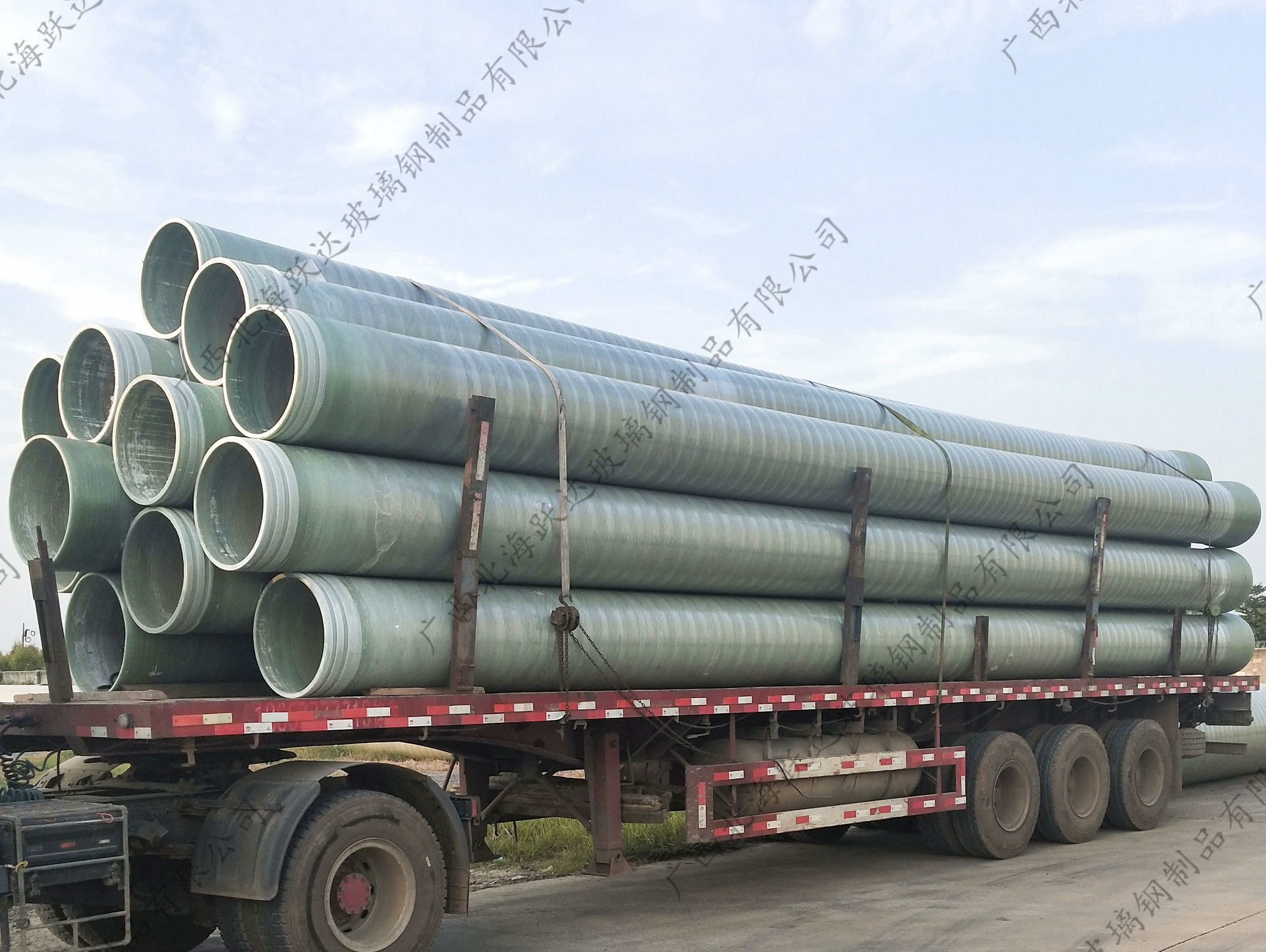Basic Overview of Glass Fiber Reinforced Plastic (FRP) Sand-Laden Pipes
Release time:
2024/03/22
Glass fiber reinforced sand pipes, as the name suggests, are glass fiber pipes with sand wrapped around them. They are made by mechanically winding resin-based glass fibers layer by layer according to process requirements onto a rotating core mold, and evenly laying quartz sand as a sand layer between the fibers at a distance. Below is a detailed introduction.

Glass fiber reinforced sand pipes, as the name suggests, are glass fiber pipes with sand wrapped around them. They are made by mechanically winding resin-based glass fibers layer by layer according to process requirements onto a rotating core mold, and evenly laying quartz sand as a sand layer between the fibers at a distance. Below is a detailed introduction.
Glass fiber reinforced sand pipes are a new type of composite material made of resin as the matrix material, glass fiber and its products as the reinforcing material, and quartz sand as the filling material. They have excellent corrosion resistance, hydraulic characteristics, light weight, high strength, and large flow capacity. Due to their advantages of easy installation, short construction period, and low overall investment, they have become the choice for chemical, drainage, and pipeline engineering. At the same time, glass fiber reinforced sand pipes also have advantages such as chemical corrosion resistance, light weight, high strength, no scaling, strong seismic resistance, longer service life than ordinary steel pipes, low overall cost, quick installation, and safety and reliability, which are accepted by a wide range of users. According to our understanding, we also found that this product is actually made of highly corrosion-resistant resin, with excellent mechanical properties and processing characteristics. Glass fiber reinforced sand pipes can withstand most untreated acid, alkali, salt seawater, corrosive soil or groundwater sewage, and many chemical attacks. They can resist long-term erosion from various chemical media such as acids, alkalis, salts, organic solvents, seawater, and sewage.
Glass fiber reinforced sand pipes can be selected based on different types of media and operating temperatures.-30℃ can still maintain good toughness and high strength, and can be used for a long time in the range of-50℃-80℃. Special formula resins can also be used at110℃. In fact, the wear resistance of glass fiber reinforced sand pipes is very good. Experimental tests have shown that injecting water containing a large amount of mud and sand into the pipes and conducting comparative tests on rotational wear effects.30After 10,000 revolutions, the wear depth of the inner wall of the pipe is as follows: the steel pipe coated with tar and porcelain oil is0.53mm; the steel pipe with surface hardening treatment is0.48mm; the glass fiber pipe is0.21mm, which indicates that the wear resistance of glass fiber pipes is strong. This type of glass fiber reinforced sand pipe is particularly suitable for municipal water supply and drainage because it is used in large quantities, is cheaper than other pipe materials, and is easy to install and maintain. Due to the low thermal conductivity of glass fiber products, their insulation performance is particularly good. Especially during use, they do not scale, rust, or get contaminated by microorganisms such as shellfish and fungi in seawater or sewage. The company uses advanced complete production equipment and processes currently available in the country, and the products produced are of high quality, beautiful appearance, and durable.
The above article provides a basic overview of glass fiber reinforced sand pipes for friends, and also shares a relatively good manufacturer of glass fiber reinforced sand pipes. If you have such needs, you can take a look, hoping to be of help to you.







